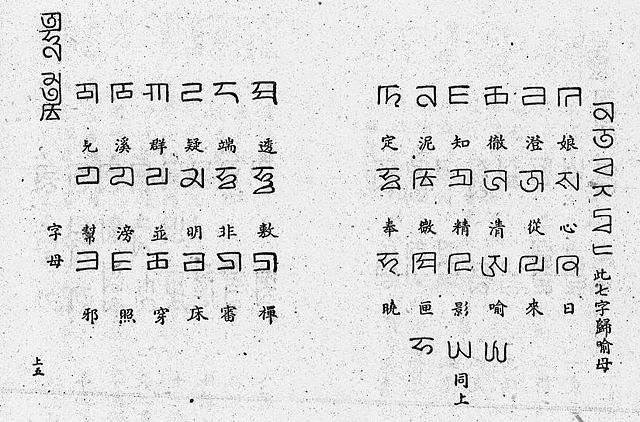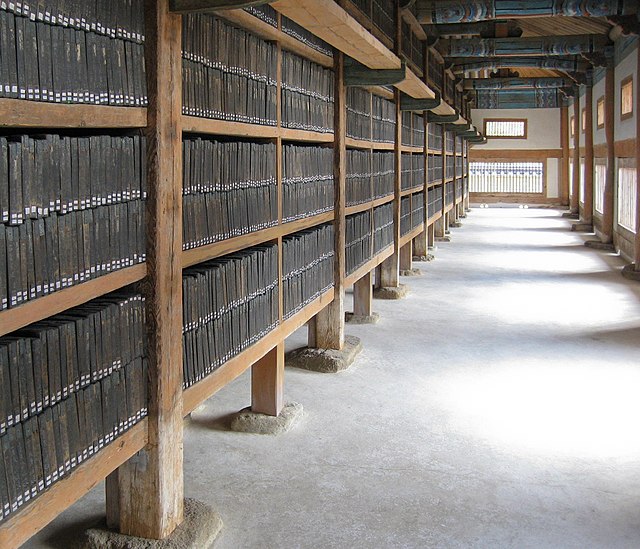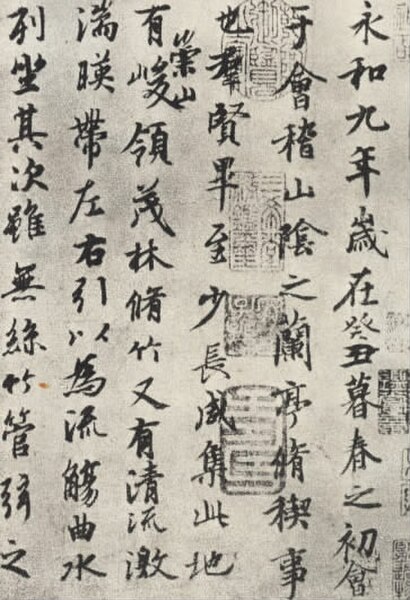Menggu Ziyun is a 14th-century rime dictionary of Old Mandarin Chinese as written in the 'Phags-pa script that was used during the Yuan dynasty (1271–1368). The only surviving examplar of this dictionary is an 18th-century manuscript copy that belonged to Stephen Wootton Bushell (1844–1908), and is now held at the British Library. As the only known example of a 'Phags-pa script dictionary of Chinese, it is important both as an aid for interpreting Yuan dynasty texts and inscriptions written in Chinese using the 'Phags-pa script, and as a source for the reconstructed pronunciation of Old Mandarin.
Page from Menggu Ziyun covering the syllables tsim to lim. Beneath each syllable (written in 'Phags-pa script) is a list of characters with that pronunciation, grouped by tone (平, 上, 去 and 入).
Christian tombstone of Yang Wengshe, dated 1314, from Quanzhou, China. The 'Phags-pa inscription reads ꡖꡟꡃ ꡮꡦ ꡗꡃ ꡚꡞ ꡏꡟ ꡈꡓ (·ung shė yang shi mu taw), representing Chinese weng she yang shi mu dao 翁舍楊氏墓道 "tomb memorial of Yang Wengshe".
Table of 36 initials in the Menggu Ziyun
Chinese is a group of languages spoken natively by the ethnic Han Chinese majority and many minority ethnic groups in China. Approximately 1.35 billion people, or 17% of the global population, speak a variety of Chinese as their first language.
The Tripitaka Koreana, a Korean collection of the Chinese Buddhist canon
"Preface to the Poems Composed at the Orchid Pavilion" by Wang Xizhi, written in semi-cursive style





